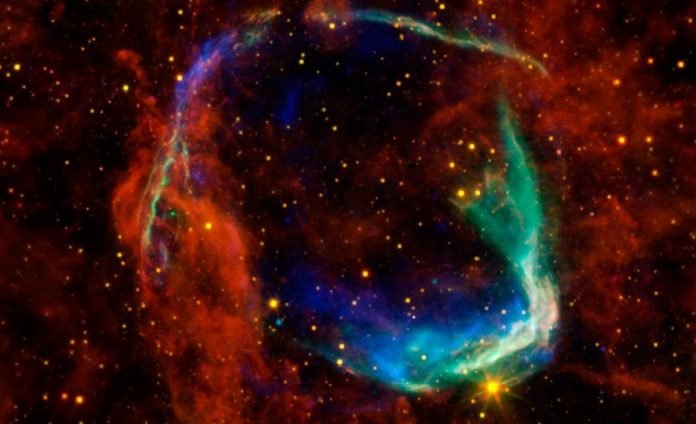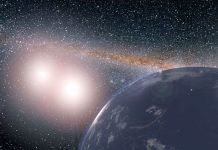
Astronomers have discovered the “queen of all supernovas,” a stellar explosion that glows brighter than any other seen before.
A supernova is the term used for a star when it “dies“, i.e., when it can no longer produce sufficient energy.
Stars need gas to burn and light up. When they run out of gas, they burn out. Their encounter with gravity catalyses an explosion, which we call a supernova.
Such an event occurs about once every hundred years in our galaxy, the Milky Way.
After a supernova explosion, the star’s core remains in the form of a neutron star. If a star was heavy enough, it collapses to become a black hole.
“We have never experienced a supernova that shines so brightly. Furthermore, it lit up for 600 days, while a ‘normal’ supernova shines brightly for between 10 and 100 days, before its light is extinguished,” says Alejandro Vigna-Goméz, a postdoctoral researcher at the Niels Bohr Institute’s Dark Cosmology Center at the University of Copenhagen.
In addition to the supernova “SN2016aps,” which glows twice as brightly as normal supernovas, it has an explosive force that is five times as violent as a normal stellar death, the researchers’ findings show.
Astronomers have never witnessed such a bright and rapidly exploding star. And now, obviously, a big question remains: what made it possible?
In his PhD dissertation, Vigna-Goméz examined why some supernovas are bigger and burn more strongly and longer than others. He studied the death of stars using computer simulations over several years, which resulted in the following theory:
“We believe that this is a case of where two stars merged into one giant star,” Vigna-Goméz explains.
“We believe this to be the case because the level of hydrogen (gas) was so incredibly high for so long after the star began to explode. Normally, this gas is quickly depleted after a star begins to explode and ‘die’.
But for this supernova, the level remained high until the very end. This suggests that there were two stars, each with an exceptionally large amount of gas, that became one,”
A star consists of a core and some outer layers of gas (hydrogen). When a single star explodes, the outer layers do not contain hydrogen.
But when two stars merge, the outer layers are harder to destroy and therefore, they are not blown away as easily. That is the reason why a merger of two stars can contain more hydrogen.
Even though the researchers are yet to be certain that the merging of two stars precipitated this supernova, they are a step nearer to confirming what until now has just been a theory.
“Our discovery is very interesting, because thus far, the emergence of supernovas has been somewhat of a mystery to us. Now we can begin testing the link between our theory and the real-life observations that we’ve made using space telescopes,” says Vigna-Goméz.
“Beyond that, it’s just crazy to think of the limitations that we had placed on supernovas, which no longer apply. This study confirms that there is still much to discover about our ever-puzzling universe.”
The study appears in the journal Nature Astronomy. Additional researchers from Harvard, Northwestern University, Ohio and Stockholm universities, among others, contributed to
the work.



